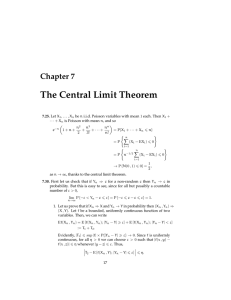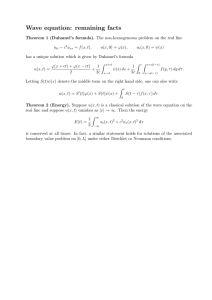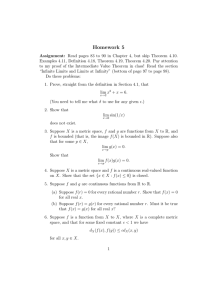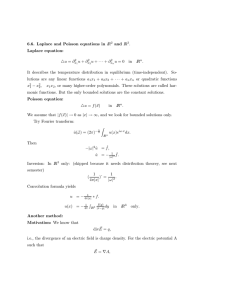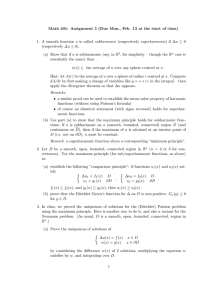Laplace equation: Poisson formulas
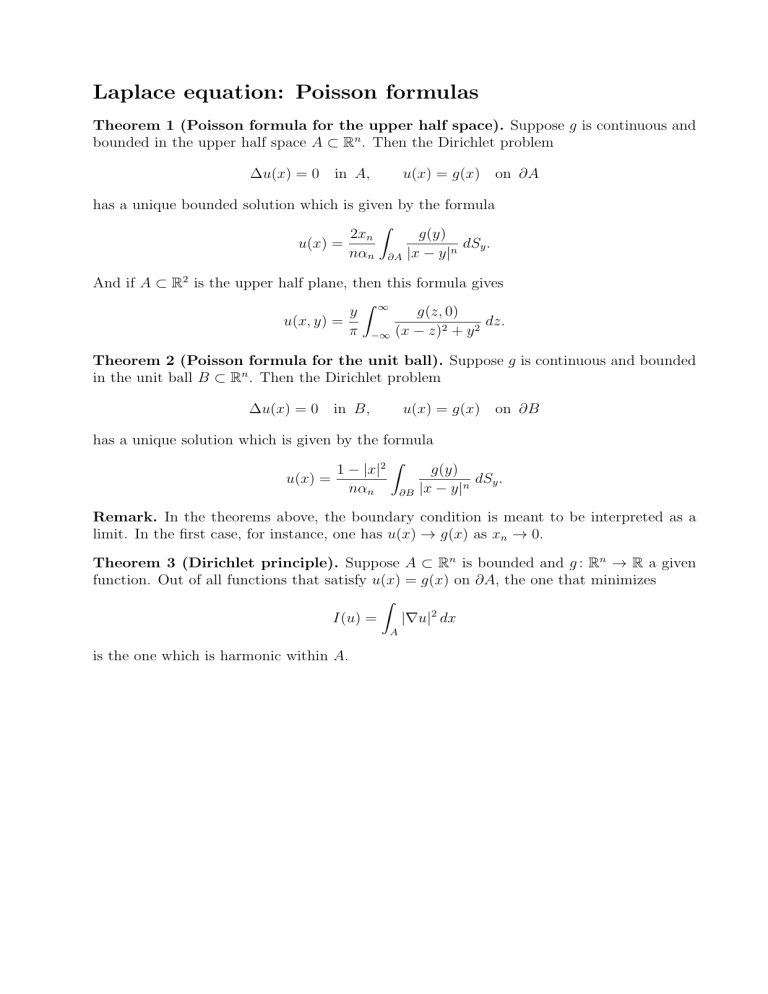
Laplace equation: Poisson formulas
Theorem 1 (Poisson formula for the upper half space).
Suppose g is continuous and bounded in the upper half space A
⊂ R n
. Then the Dirichlet problem
∆ u ( x ) = 0 in A, u ( x ) = g ( x ) on ∂A has a unique bounded solution which is given by the formula
∫
2 x n g ( y ) u ( x ) = dS y
.
nα n ∂A
| x
− y
| n
And if A
⊂ R 2 is the upper half plane, then this formula gives
∫ y
∞ g ( z, 0) u ( x, y ) = dz.
π
−∞
( x
− z ) 2 + y 2
Theorem 2 (Poisson formula for the unit ball).
Suppose g is continuous and bounded in the unit ball B
⊂ R n . Then the Dirichlet problem
∆ u ( x ) = 0 in B, u ( x ) = g ( x ) on ∂B has a unique solution which is given by the formula
1
− | x
| 2
∫ u ( x ) = nα n ∂B g ( y )
| x
− y
| n dS y
.
Remark.
In the theorems above, the boundary condition is meant to be interpreted as a limit. In the first case, for instance, one has u ( x )
→ g ( x ) as x n
→
0.
Theorem 3 (Dirichlet principle).
Suppose A
⊂ R n is bounded and g :
R n → R a given function. Out of all functions that satisfy u ( x ) = g ( x ) on ∂A , the one that minimizes
∫
I ( u ) =
|∇ u
| 2 dx
A is the one which is harmonic within A .

